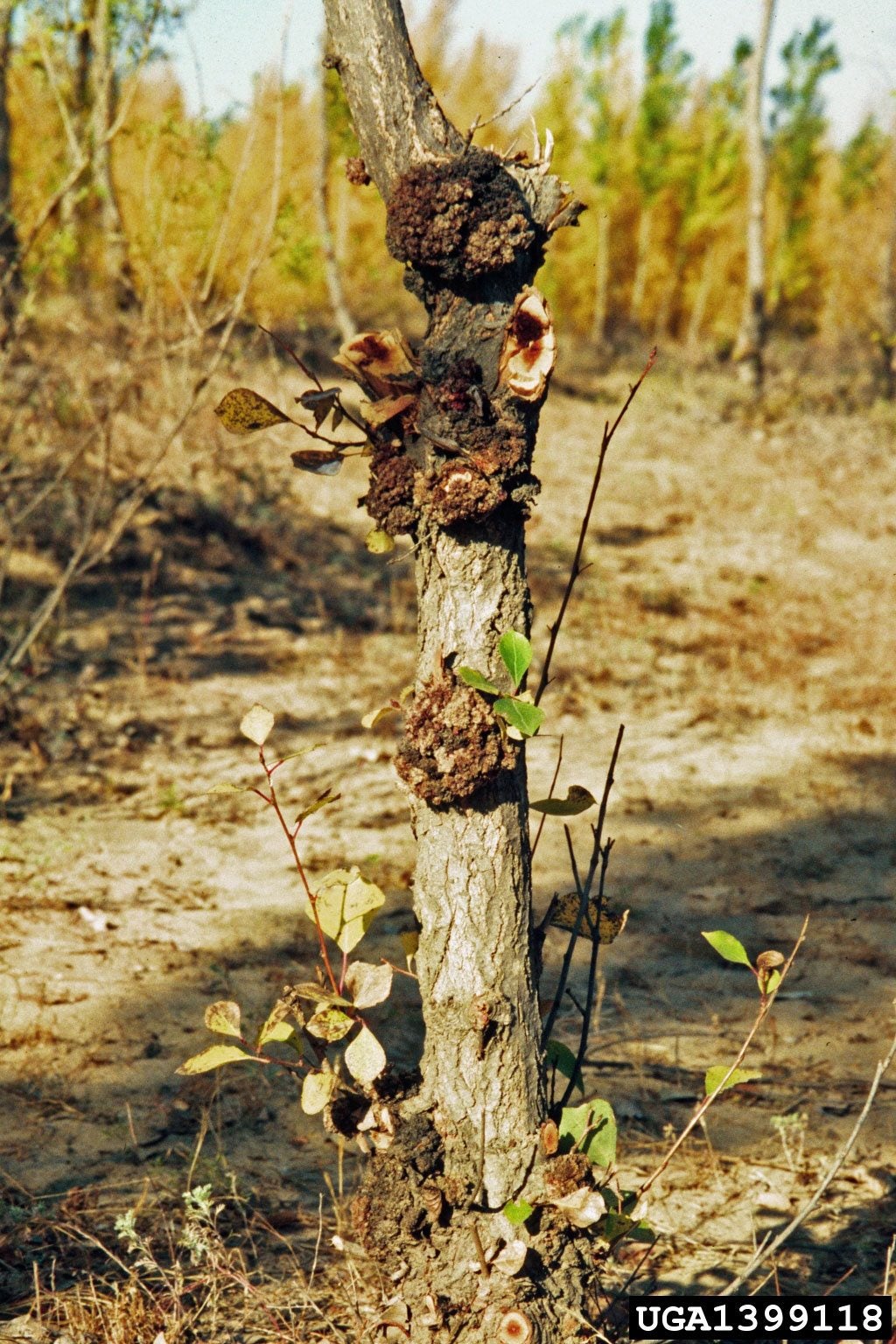Plants Affected By Crown Gall: Tips On How To Fix Crown Gall


Before you decide to start crown gall treatment, consider the value of the plant you are treating. The bacteria that cause crown gall disease in plants persists in the soil as long as there are susceptible plants in the area. To eliminate the bacteria and prevent the spread, it's best to remove and destroy diseased plants.
What is Crown Gall?
When learning about crown gall treatment, it helps to know more about what crown gall in the first place is. Plants with crown gall have swollen knots, called galls, near the crown and sometimes on the roots and twigs as well. The galls are tan in color and may be spongy in texture at first, but they eventually harden and turn dark brown or black. As the disease progresses, the galls can totally encircle the trunks and branches, cutting off the flow of sap that nourishes the plant. The galls are caused by a bacterium (Rhizobium radiobacter formerly Agrobacterium tumefaciens) that lives in the soil and enters the plant through injuries. Once inside the plant, the bacterium injects some of its genetic material into the host's cells, causing it to produce hormones that stimulate small areas of rapid growth.
How to Fix Crown Gall
Unfortunately, the best course of action for plants affected by crown gall is to remove and destroy the infected plant. The bacteria can persist in the soil for two years after the plant is gone, so avoid planting any other susceptible plants in the area until the bacteria dies out for lack of a host plant. Prevention is an essential aspect of dealing with crown gall. Inspect plants carefully before you buy them and reject any plants with swollen knots. The disease can enter the plant in the nursery through the graft union, so pay particular attention to this area. To prevent the bacteria from entering the plant once you get it home, avoid wounds near the ground as much as possible. Use string trimmers with care and mow the lawn so that debris flies away from susceptible plants. Galltrol is a product that contains a bacterium that competes with Rhizobium radiobacter and prevents it from entering wounds. A chemical eradicant called Gallex may also help prevent the crown gall disease in plants. Although these products are sometimes recommended for crown gall treatment, they are more effective when used as a preventative before the bacteria infects the plant.
Plants Affected by Crown Gall
Over 600 different plants are affected by crown gall, including these common landscape plants:
- Fruit trees, particularly apples and members of the Prunus family, which includes cherries and plums
- Roses and members of the rose family
- Raspberries and blackberries
- Willow trees
- Wisteria
Gardening tips, videos, info and more delivered right to your inbox!
Sign up for the Gardening Know How newsletter today and receive a free copy of our e-book "How to Grow Delicious Tomatoes".

Jackie Carroll has written over 500 articles for Gardening Know How on a wide range of topics.
-
 Looking For Plants To Give You The Soft And Fuzzies? Try These 5 Fuzzy Leaf Plant Options
Looking For Plants To Give You The Soft And Fuzzies? Try These 5 Fuzzy Leaf Plant OptionsLovers of texture, drama, silver foliage and tactile plants will adore these special sensory garden additions. These fuzzy leaf plant options will leave you all aglow
By Susan Albert
-
 Get Ready For A Summer Of Hummers! Grow These Full Sun Hummingbird Plants and Flowers
Get Ready For A Summer Of Hummers! Grow These Full Sun Hummingbird Plants and FlowersIf you’re lucky enough to enjoy a sunny backyard, make sure you are maxing out on your pollinator opportunities and grow these full sun hummingbird plants and flowers
By Tonya Barnett